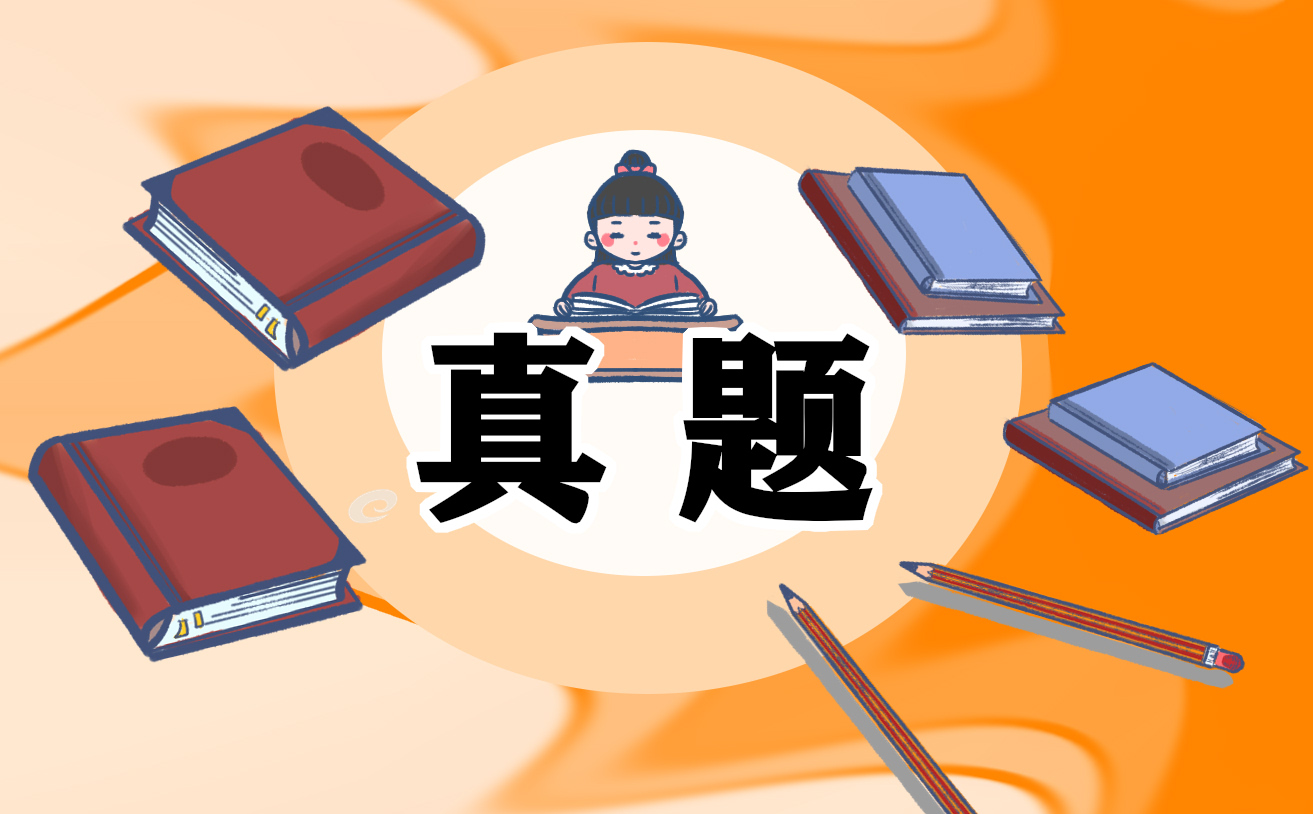考研英語大綱詞匯5500詞,一看這么多詞匯,很多考生會感到望而卻步,建議大家先學習構詞法,這樣就幫大家節省很多時間,并且記憶也相對會更加牢固。下文是小編為你精心編輯整理的考研英一真題閱讀理解,希望對你有所幫助,更多內容,請點擊相關欄目查看,謝謝!
考研英一真題閱讀理解1
A new survey by Harvard University finds more than two-thirds of young Americans disapprove of President Trump’s use of Twitter. The implication is that Millennials prefer news from the White House to be filtered through other source, Not a president’s social media platform.
Most Americans rely on social media to check daily headlines. Yet as distrust has risen toward all media, people may be starting to beef up their media literacy skills. Such a trend is badly needed. During the 2016 presidential campaign, nearly a quarter of web content shared by Twitter users in the politically critical state of Michigan was fake news, according to the University of Oxford. And a survey conducted for BuzzFeed News found 44 percent of Facebook users rarely or never trust news from the media giant.
Young people who are digital natives are indeed becoming more skillful at separating fact from fiction in cyberspace. A Knight Foundation focus-group survey of young people between ages 14and24 found they use “distributed trust” to verify stories. They cross-check sources and prefer news from different perspectives—especially those that are open about any bias. “Many young people assume a great deal of personal responsibility for educating themselves and actively seeking out opposing viewpoints,” the survey concluded.
Such active research can have another effect. A 2014 survey conducted in Australia, Britain, and the United States by the University of Wisconsin-Madison found that young people’s reliance on social media led to greater political engagement.
Social media allows users to experience news events more intimately and immediately while also permitting them to re-share news as a projection of their values and interests. This forces users to be more conscious of their role in passing along information. A survey by Barna research group found the top reason given by Americans for the fake news phenomenon is “reader error,” more so than made-up stories or factual mistakes in reporting. About a third say the problem of fake news lies in “misinterpretation or exaggeration of actual news” via social media. In other words, the choice to share news on social media may be the heart of the issue. “This indicates there is a real personal responsibility in counteracting this problem,” says Roxanne Stone, editor in chief at Barna Group.
So when young people are critical of an over-tweeting president, they reveal a mental discipline in thinking skills – and in their choices on when to share on social media.
26. According to the Paragraphs 1 and 2, many young Americans cast doubts on
[A] the justification of the news-filtering practice.
[B] people’s preference for social media platforms.
[C] the administrations ability to handle information.
[D] social media was a reliable source of news.
27. The phrase “beer up”(Line 2, Para. 2) is closest in meaning to
[A] sharpen
[B] define
[C] boast
[D] share
28. According to the knight foundation survey, young people
[A] tend to voice their opinions in cyberspace.
[B] verify news by referring to diverse resources.
[C] have s strong sense of responsibility.
[D] like to exchange views on “distributed trust”
29. The Barna survey found that a main cause for the fake news problem is
[A] readers outdated values.
[B] journalists’ biased reporting
[C] readers’ misinterpretation
[D] journalists’ made-up stories.
30. Which of the following would be the best title for the text?
[A] A Rise in Critical Skills for Sharing News Online
[B] A Counteraction Against the Over-tweeting Trend
[C] The Accumulation of Mutual Trust on Social Media.
[D] The Platforms for Projection of Personal Interests.
考研英一真題閱讀理解2
Just how much does the Constitution protect your digital data? The Supreme Court will now consider whether police can search the contents of a mobile phone without a warrant if the phone is on or around a person during an arrest.
California has asked the justices to refrain from a sweeping ruling, particularly one that upsets the old assumptions that authorities may search through the possessions of suspects at the time of their arrest. It is hard, the state argues, for judges to assess the implications of new and rapidly changing technologies.
The court would be recklessly modest if it followed California's advice. Enough of the implications are discernable, even obvious, so that the justice can and should provide updated guidelines to police, lawyers and defendants.
They should start by discarding California's lame argument that exploring the contents of a smartphone- a vast storehouse of digital information is similar to say, going through a suspect's purse .The court has ruled that police don't violate the Fourth Amendment when they go through the wallet or pocketbook, of an arrestee without a warrant. But exploring one's smartphone is more like entering his or her home. A smartphone may contain an arrestee's reading history, financial history, medical history and comprehensive records of recent correspondence. The development of "cloud computing." meanwhile, has made that exploration so much the easier.
But the justices should not swallow California's argument whole. New, disruptive technology sometimes demands novel applications of the Constitution's protections. Orin Kerr, a law professor, compares the explosion and accessibility of digital information in the 21st century with the establishment of automobile use as a digital necessity of life in the 20th: The justices had to specify novel rules for the new personal domain of the passenger car then; they must sort out how the Fourth Amendment applies to digital information now.
26. The Supreme court, will work out whether, during an arrest, it is legitimate to
[A] search for suspects' mobile phones without a warrant.
[B] check suspects' phone contents without being authorized.
[C] prevent suspects from deleting their phone contents.
[D] prohibit suspects from using their mobile phones.
27. The author's attitude toward California's argument is one of
[A] tolerance.
[B] indifference.
[C] disapproval.
[D] cautiousness.
28. The author believes that exploring one's phone content is comparable to
[A] getting into one's residence.
[B] handing one's historical records.
[C] scanning one's correspondences.
[D] going through one's wallet.
29. In Paragraph 5 and 6, the author shows his concern that
[A] principles are hard to be clearly expressed.
[B] the court is giving police less room for action.
[C] phones are used to store sensitive information.
[D] citizens' privacy is not effective protected.
30.Orin Kerr's comparison is quoted to indicate that
(A)the Constitution should be implemented flexibly.
(B)New technology requires reinterpretation of the Constitution.
(C)California's argument violates principles of the Constitution.
(D)Principles of the Constitution should never be altered.
考研英一真題閱讀理解3
An old saying has it that half of all advertising budgets are wasted-the trouble is, no one knows which half . In the internet age, at least in theory ,this fraction can be much reduced . By watching what people search for, click on and say online, companies can aim “behavioural” ads at those most likely to buy.
In the past couple of weeks a quarrel has illustrated the value to advertisers of such fine-grained information: Should advertisers assume that people are happy to be tracked and sent behavioural ads? Or should they have explicit permission?
In December 2010 America's Federal Trade Cornmission (FTC) proposed adding a "do not track "(DNT) option to internet browsers ,so that users could tell adwertisers that they did not want to be followed .Microsoft's Internet Explorer and Apple's Safari both offer DNT ;Google's Chrome is due to do so this year. In February the FTC and Digltal Adwertising Alliance (DAA) agreed that the industry would get cracking on responging to DNT requests.
On May 31st Microsoft Set off the row: It said that Internet Explorer 10,the version due to appear windows 8, would have DNT as a default.
It is not yet clear how advertisers will respond. Geting a DNT signal does not oblige anyone to stop tracking, although some companies have promised to do so. Unable to tell whether someone really objects to behavioural ads or whether they are sticking with Microsoft’s default, some may ignore a DNT signal and press on anyway.
Also unclear is why Microsoft has gone it alone. Atter all, it has an ad business too, which it says will comply with DNT requests, though it is still working out how. If it is trying to upset Google, which relies almost wholly on default will become the norm. DNT does not seem an obviously huge selling point for windows 8-though the firm has compared some of its other products favourably with Google's on that count before. Brendon Lynch, Microsoft's chief privacy officer, bloggde:"we believe consumers should have more control." Could it really be that simple?
26. It is suggested in paragraph 1 that “behavioural” ads help advertisers to:
[A] ease competition among themselves
[B] lower their operational costs
[C] avoid complaints from consumers
[D] provide better online services
27. “The industry” (Line 6,Para.3) refers to:
[A] online advertisers
[B] e-commerce conductors
[C] digital information analysis
[D] internet browser developers
28. Bob Liodice holds that setting DNT as a default
[A] many cut the number of junk ads
[B] fails to affect the ad industry
[C] will not benefit consumers
[D] goes against human nature
29. which of the following is ture according to Paragraph.6?
[A] DNT may not serve its intended purpose
[B] Advertisers are willing to implement DNT
[C] DNT is losing its popularity among consumers
[D] Advertisers are obliged to offer behavioural ads
30. The author's attitude towards what Brendon Lynch said in his blog is one of:
[A] indulgence
[B] understanding
[C] appreciaction
[D] skepticism
上一篇:考研英一閱讀真題
下一篇:英一考研作文真題閱讀理解




